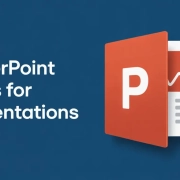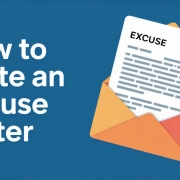How Case Studies Improve Research and Critical Thinking Skills
An Exploration of Case-Based Learning
As mentioned already, case-based learning is one of the many approaches instructors use to benefit students. It’s often combined or used complementarily with a flipped classroom model for a more hands-on learning experience.
The latter is an approach where the traditional teaching-learning structure is flipped or reversed. So, where students would first receive instruction in class and be assigned homework later, the flipped model would make it upside down.
Now, students are free to learn new material before class and use the instruction hours for discussions or practical applications. This works in tandem with case-based learning, which is marked by the use of concrete examples and case studies.
Students can apply the case studies individually or analyse them in groups. They will have to understand the problem(s) involved and come up with potential solutions. An example in this regard would be business students analysing the history of real companies to see how they overcame key barriers to growth.
Now, such an approach to learning is not fixated on real-world examples. Students can also be given fictional scenarios for analysis. Instructors are free to use diverse forms of case studies, including:
Intrinsic case studies
Here, the case itself becomes the subject of interest. So, students may analyse how a rare disease affected a patient or how a community responded to a natural disaster.
Exploratory case studies
These focus on investigating a new or complex issue in depth. Students try to extract new information, so an example would be studying the different faces of Post Traumatic Stress Disorder (PTSD) among veterans.
Descriptive case studies
The aim in these studies is to analyse the detailed account of a specific event or phenomenon. For such a study, students may learn the patient outcomes of a particular therapy.
Explanatory case studies
These mainly examine cause-and-effect relationships of real-world events. So, understanding the ‘how’ and ‘why’ becomes extremely crucial. One example can include analysing a company’s market dynamics to discover the reasons behind its success or failure.
Now, educators prefer the case-based learning method, especially for advanced-level students. First things first, the CBL approach in combination with flipped classroom models has been found to enhance critical thinking skills significantly. This result was observed in a 2024 study involving international students.
Moreover, learning enthusiasm improved because CBL allows students to research independently and actively participate in classroom learning. Gathering data from multiple sources while also checking their credibility takes a lot of critical thinking. Students must also question assumptions and consider multiple viewpoints, which strengthens their research over time.
Why Case Studies Improve Research Skills and Critical Thinking
Did you know that most post-secondary programs and courses fail to foster the level of critical thinking needed for the 21st century? It may have something to do with a totally hypothetical-examples approach. While it may seem the same to CBL, it’s not as authentic for students.
With realistic scenarios, students get the opportunity to grapple with ethical complexity, too. Their learning moves beyond mere memorisation to independent reasoning. Let’s look at this aspect, which involves research and critical thinking, in detail:
Analytical Depth Through Complexity
The best part about case studies is that they seldom offer a clear ‘right answer.’ Perhaps a lot of them can be approached from multiple angles. This level of ambiguity, while intimidating, also strengthens students’ ability to handle uncertain, even conflicting data.
Take the example of legal disputes that often serve as a fertile ground to learn ethics and accountability. On that note, the DraftKings lawsuit is a litigation rich with regulatory and psychological dimensions.
As TruLaw shares, allegations involve misleading claims and VIP programs meant to target vulnerable, high-spending users. With such cases, students will be equipped to ask questions on:
- Corporate responsibility in dealing with behavioural psychology
- Regulatory interventions in cases of deceptive/manipulative marketing
- Evidence scholars might need to write off claims of misleading promotions
Better Research Competence
When answers are not linear, students must find different avenues. In other words, complex events push students to:
- Refer to multiple credible sources of information
- Go as far as assessing the credibility of each source
- Use various forms of information for a cohesive conclusion
This entire process is similar to the methodology scholars use for their research endeavours. Even if claims are made, they must be backed by verifiable evidence and reasoning. That’s a game-changer in enhancing research skills.
Reflective Judgment
A most interesting observation in CBL has been its ability to promote ethical awareness. Students understand that judgments cannot always be absolute. When issues are multi-faceted and not clear-cut, gray areas are explored.
This broadens the horizons of one’s mind when it comes to possibilities. No wonder a 2025 study conducted on pharmacy students found that CBL led to higher exam scores compared to lecture-based learning.
Due to reflective experiences, students can:
- Gain intellectual humility as they realise how subjective interpretations can be
- Become sensitive to how decisions affect both individuals and communities
- Understand how arguments can be made with transparency and integrity
Considerations for Choosing Effective Real-World Cases
With case studies, students have the unique opportunity to replicate authentic experiences for deep analysis. However, the quality of the case studies will play a key role. Case studies can be found in a multitude of disciplines, including ecology, medicine, law, and even philosophy.
Well-designed case studies offer the exclusive chance to apply knowledge and skills in real-world contexts. So, let’s look at the various considerations involved in choosing an effective case study across disciplines:
Consistency With Learning Outcomes
This may be the most important criterion. A good case study never stays a theory. It can actively engage students to solve complex issues.
While presenting a case study through text is the easiest means, videos can also be used. So, if a case study is on law or ethics, it would aim at enhancing the students’ reasoning skills. Essentially, there needs to be a direct link with learning outcomes.
Relevance
If students don’t find the case study to be contextually relevant, it won’t be effective. The scenario and facts should sound believable. Details of the situation and the people involved are a must to paint a realistic picture.
Also, there needs to be a definite storyline that students find relatable. It may have familiar characters, common problems, etc. Most importantly, students need to feel as if something is at stake. Unless a compelling issue is driving the case, it won’t have an impact.
Appropriate Complexity And Depth
Again, straightforward solutions won’t make the cut. Students require a lot more than a mechanical ‘when this happens in life, do this’ approach. This is precisely why case studies need to have a certain degree of genuine complexity.
There should be multiple layers to peel before one can conclude. Besides familiar issues and relevant characters, there must be messy or unimportant details in the mix. Such a combination will encourage students to analyse the whole scenario and decide what needs to stay or go.
Practical Strategies for Effective CBL
We just discussed the importance of selecting real-world case studies carefully. While that is crucial, it’s not the whole story. Desirable student learning outcomes are dependent on how each case study is presented and reflected upon. Let’s look at effective strategies for the same:
Encouraging Pre-Class Preparation
It’s high time that instructors side with a flipped classroom approach. A recent study done on 73 pre-service teachers discovered that their instruction delivery and student learning outcomes improved with a flipped classroom approach. This was also combined with CBL.
The reason behind its effectiveness has to do with how case materials are provided ahead of the class. That way, classroom time is utilised for quality discussions instead of basic comprehension. Such an approach also promotes self-paced learning, which enhances student understanding.
Moving Beyond Surface-Level Discussions
The very nature of CBL is such that superficial discussions won’t suffice. Educators need to encourage peer interactions and collaborative problem-solving. When discussed in groups, case studies allow students to:
- Hear and analyse different perspectives on the same issue
- Gain a new understanding of the same principles
- Improve their communication and leadership competencies
Shifting Assessment Focus
Another effective strategy would be to stop focusing on the product of a case study in place of the process. This means educators can shift their attention from final answers to:
- The path of reasoning chosen by the student
- The quality of the evidence or sources cited
- The skills the student has showcased in analysing conflicting viewpoints
Once all is said and done, post-discussion reflection should not be left out. When students apply what they’ve learnt in one case study across numerous others, their understanding improves.
It’s important to stay immersed in case studies until theory becomes alive. Otherwise, how will students know the real-world significance of their textbook knowledge? Such a learning method is deeply significant to create thoughtful researchers of the future.
Frequently Asked Questions
Case-based learning, or CBL, is a step ahead of that which is based on lectures. It allows students to manipulate foundational theoretical knowledge and use it in practical contexts. Students can interact with each other, discuss viewpoints, and draw conclusions through active engagement.
Effective case studies do not offer straightforward answers. Many don’t even have a singular answer. They compel students to analyse events and verify the credibility of sources. This naturally involves critical thinking or the ability to form a reasoned judgment based on objective analysis.
Case studies deliver the desired outcomes in learning when they’re authentic and mimic real-world events. They should also be layered and contextually rich, so students can exercise their research/critical thinking skills. Finally, effective case studies are also open-ended, supporting student-led conclusions.
CBL holds distinct importance for higher education because it effectively meets the learning needs of adult students. Early education may emphasise basic knowledge because it lays the foundation for learning. Higher education demands independent reasoning and practical application of knowledge, which case studies facilitate.
Case-based learning yields its benefits only to students who move beyond passive reading. One must adopt a curious mindset willing to explore multiple angles. Successful students question assumptions and verify claims from independent sources. Each case must become a lens to gain a deeper understanding, not just a problem to be solved.
academhelper.com academhelper.com
"Looking for a Similar Assignment? Get Expert Help at an Amazing Discount!"







